How virtual reality will change the way developers design games forever
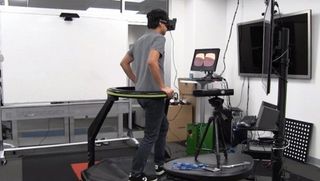
The future is (almost) now
Virtual reality is coming whether you're interested or not. Soon, gamers will have the opportunity to equip fancy headsets and--for the first time--simulate exploring a virtual world from within rather than through a TV screen. That's exciting! But what, exactly, should we expect in terms of gameplay experiences? And what are the challenges involved in creating those experiences?
When we talk about virtual reality, surely we're not just talking about turning our heads into a camera so we can play Call of Duty, right? I'm not a game developer; I can't really say--so I reached out to some folks that work in VR and games to find out. Anton Mikhailov, an R&D engineer at Sony Computer Entertainment working on Sony's Project Morpheus, and Sigurur Gunnarsson, a senior programmer at CCP Games (developer of EVE Valkyrie), were kind enough to shed some light on what separates VR gaming experiences from the traditional ones we're so very familiar with.
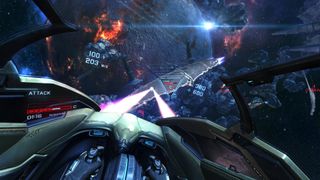
They'll need to treat VR as a whole new medium, not a peripheral
During the unveiling of Project Morpheus at 2014's Game Developers Conference, one of Sony's engineers said virtual reality is a medium, not a peripheral. That made me wonder: how so? How is wearing a headset different than holding a PS Move controller? The answer, according to Mikhailov, is that while motion controls provide an alternate way to interact with games, virtual reality is about providing a new way to explore them.
"The rules for VR design are very different than TV game design," Mikhailov says. "A VR experience is fundamentally about being in a different place, which might have a game associated with it or not. Motion controls existed in the PS3-generation independent of any VR application, but [VR] is about the convergence of several technologies." A headset is only part of the equation, then; add in motion-trackable inputs--the PS Move controller, for instance--and then you can really begin to create the sort of immersive experience that only virtual reality can provide.
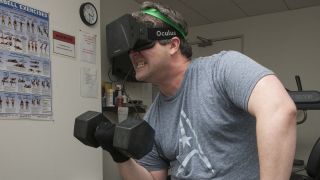
They're going to have to embrace motion controls and the idea of presence
Alright, so the mention of motion controls probably doesn't excite you all that much. A lot of hardcore games that implement them often do so poorly. But motion controls will be an integral part of virtual reality. Why? Gunnarsson explains: "The power of 'presence,' of being somewhere else and being fascinated by the virtual world around you, can be much more powerful than a bigger game that does not cater to this sense of presence."
It's the difference between playing a dance game and feeling like you're dancing in a dance club. For some VR games, creating that atmosphere will be reason enough to make us want to play the game--no clever mechanics required. And part of making that simulation convincing is giving us one-to-one control of our virtual arms and legs.

They'll need to re-teach gamers how to do basic things
What will early VR games look like? Really, it's hard to say, especially considering final models of the Oculus Rift and Sony's Project Morpheus aren't yet available. Gunnarsson has some ideas, though. "Right now we are dealing with both technical limitations and people figuring out what kind of games are fun to make in VR," he says. "The low-hanging fruit here is to make games that cater to the 'sitting down' experience, where you sit inside some sort of vehicle: driving games, space games, flight simulators, mech games, and so on. Games with bipedal locomotion are much harder to make for various reasons, but they will eventually be solved with a mix of good software and tech innovations."
I'd also wager we'll be seeing a lot of horror games early on. Slender Man is notorious for its jump scares, but I can imagine its ability to terrify exponentially increases once you're exploring a dark, creepy forest in VR while a ghastly entity hunts you at every turn. (NOOOOOPE.) Then, of course, there are games that could simply be retrofitted with VR support! Right!?
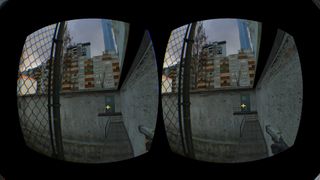
They'll need to create new experiences from the ground up
Can you retrofit already-released games with virtual reality? Sure. Is it a good idea? Eh it typically makes for a rather poor user experience--much the same way retrofitting movies filmed in 2D with stereoscopic 3D makes for an unenjoyable viewing experience. "I don't think retrofitting or porting existing games for VR works--at all," Gunnarsson says. "It has, however, helped people become more interested in VR since there are so few games/demos out there right now for people to try."
Mikhailov expresses a similar opinion: "It really depends on the game, but in general it is a tough route. A big part of game development is optimizing for your input and output. You see this in the differences between tablet games and console games, for example. The kinds of gameplay you do for touchscreens is fundamentally different than what youd do for a console controller; some games happen to work on both, but its the exception not the rule. The same can be said for VR." That said, I don't think anyone would argue that making a virtual reality game from scratch is by any means an easy task, so I had to ask: What are some of the specific challenges involved in developing a convincing, virtual world that's meant to be explored from within?

They'll need to pay much more attention to scale
Fun fact: that car in Watch Dogs that looks perfectly normal on a TV screen? Look at that same car in first-person with a VR headset and it might look like a cross between a monster truck and a limousine.
"Attention to scale is a huge deal, a lot of game art is simply bizarre when you look at it in VR," Mikhailov says. "Doorknobs are often at chest height, coffee tables are huge, that kind of thing. Its important to view your environment in VR also, because it might look completely wrong to you on the screen." Gunnarsson adds: "Our artists have also found it challenging to find the right level of detail, since true stereoscopic vision makes many common tricks obsolete and flat-looking." For a medium that hinges on immersion, nailing scale is an absolute must. But that's not the only important thing.
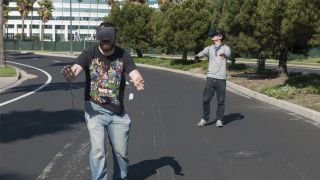
They'll need to re-tool movement speed in first-person games
Let's think about Call of Duty for a second. When you're running around on your favorite map, it may seem as though your character is moving at a realistic speed; but really your regular walk is more akin to a real-life sprint. Gunnarsson says tuning movement speed to feel natural will vastly improve a player's VR experience.
"The simplest example of this are today's FPS games where the player is running at unnatural speeds that simply do not feel good in VR," he says. "I believe the first good [VR] FPS games will be much slower and be more about the experience than twitch-based shooting--but on the flipside that can reach a point where the experience becomes all too real and more violent than fun."
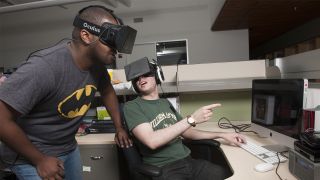
They'll need to discover new UI solutions
Another thing to consider: When playing a virtual reality game--meaning, simulating the act of being inside a virtual world--where the hell do you put UI elements? How does your game communicate a player's health? What about a HUD? Gunnarsson argues these things should somehow be designed into the game's world, instead of appearing as traditional, floating indicators.
"There are many things you have to do differently when designing a game for VR, but the biggest one is probably UI," Gunnarsson says. "Traditionally, designers have placed UI and HUD elements at the edges of the screen, often to get around the fact that it is hard to absorb everything going around you without being able to look around. A good example of this is the concept of health or status of your craft. Instead of showing a counter that says 50% health we want you to see things like your craft breaking apart, or parts of it catching fire."
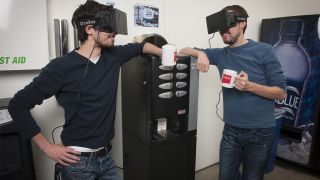
They'll have to model EVERYTHING
Modeling probably isn't something many of us give much thought to when playing games, but Mikhailov brings up an interesting point about how it relates to VR games. Think of a traditional cutscene. You typically have no control of the camera here; what you see in the cutscene is all that exists in the game's world at that particular moment. But players in VR games can look in any direction at any time, meaning an entire zone or world must be modeled in all directions, always.
"The first thing that hits you is that the player can look all around, anywhere," Mikhailov says. "Often times games just have blank areas behind you, because you cant look that way during a cutscene for example--it doesnt make sense to model stuff the player wont ever see. But in VR thats not really an option because you cant take control of the players head without making them sick." Hmm Speaking of sickness...

They'll need to be very wary of simulator sickness
Let's get one thing clear, here: When we talk about motion sickness in relation to virtual reality, what we're really referring to is simulator sickness. As Gunnarsson explains, "Any disconnect between what we see and what we feel makes us ill. When you are a passenger in a car and are reading a book, your body senses movement but doesn't see any since most of your vision is taken up by the book you are reading. When in VR it's the reverse, where you see movement but don't feel any."
Okay, so how can virtual reality games circumvent simulator sickness without relying on some sort of movement-simulating treadmill? "The key to this on the hardware side is to ensure low latency and solid tracking in both position and rotation," Mikhailov says. "On the software side, this means high framerates and never taking control of the users head. But just like real life, different people will have different tolerances to extreme environments."
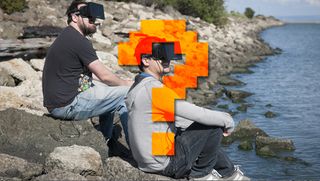
Bonus: VR can also be used for exciting non-gaming things!
I love video games--chances are, you also love video games--but thinking about virtual reality purely from a gaming perspective is incredibly shortsighted. Even if early VR games absolutely suck, it still might be a good idea to pick up an Oculus Rift or Sony Morpheus merely for the other forms of entertainment they might provide.
"We spoke about a few [non-gaming] uses in our GDC talk, but one of the exciting ones I think is virtual tourism," Mikhailov says. "Because VR really gives you a sense of being in a different place, its quite fun just looking around real and fantasy environments. This also ties in to our collaboration with NASA--weve made a demo together where you stand on the surface of Mars. And this is real data from the real Mars rover, not an artist rendering. Most of us will probably never get to experience that first hand, but experiencing it in VR is quite exciting."
This, of course, is to say nothing of what will happen once the adult entertainment industry catches wind of the advancements in VR.
And if you're looking for more, check out why the time for virtual reality is now and 8 franchises ready for the VR treatment.

Ryan was once the Executive Editor of GamesRadar, before moving into the world of games development. He worked as a Brand Manager at EA, and then at Bethesda Softworks, before moving to 2K. He briefly went back to EA and is now the Director of Global Marketing Strategy at 2K.
Most Popular
